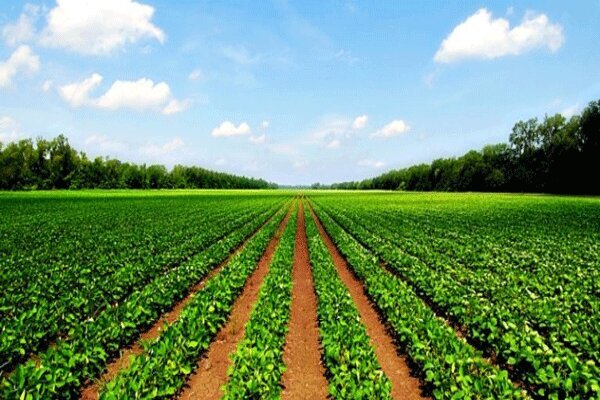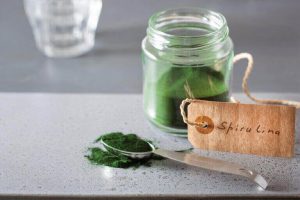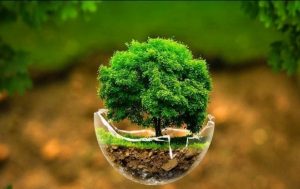It is no secret that in the agricultural industry, the first word is rich soil. Soil has many elements that in the agricultural industry, the first step is to identify the structure of the soil and then seek to strengthen and enrich it. One of the most important heavy elements in the soil is cadmium, which is also important for the environment and human health. In this article, we intend to introduce you to the use and effect of green algae Spirulina on the chemical forms of cadmium in a calcareous soil.

The accumulation of heavy metals in the soil leads to an increase in its absorption by plants and can cause serious problems for the health of humans, animals and the environment. The most important factors in increasing the concentration of heavy metals in the soil are the use of agricultural fertilizers, pesticides, and industrial and urban wastewater. Cadmium is a heavy metal that has high toxicity in low concentrations and is one of the most common soil pollutants, and its toxicity increases with the increase of its mobility in the soil. Soils contaminated with heavy metals need special management techniques in order to reduce the solubility of metals and their bioavailability for plants. Effective techniques in improving these types of soils include physical improvement, chemical improvement and phytoremediation, which chemical improvement is widely used due to the stabilization of metals in the soil.
According to the studies, adding organic matter to the soil is effective in increasing the pH of the soil and the exchange capacity of the soil and as a result reducing the bioavailability of heavy metals for plants, and hence there will be more fixed metals and sediment in the soil. In other words, organic substances can change the form of exchange and solution of heavy metals into carbonate, organic matter and multiple hydroxide scales and reduce their bioavailability.
Spirulina is a blue-green algae found in warm climates and alkaline volcanic lakes that can grow in uncultivable and unusable soils. Spirulina algae biomass consists of 62% amino acids and carotene and is considered a rich source of vitamin B12. Extensive studies have been conducted in the field of the application of sprolibena algae in the removal of heavy metals, the purpose of all of which was to remove pollution from the aquatic environment. According to the research done, spirulina algae has a high potential in removing metal from aqueous solution and was able to remove a large amount of cadmium metal (87%) from the aqueous environment. Also, biological adsorbents are one of the reliable methods for removing metal ions from aqueous solutions, and their advantages include easy implementation, low cost, high efficiency, and the possibility of selective metal removal.
The use of spirulina green algae as an absorbent has resulted in the removal of cadmium metal by 90% from the aqueous solution. Researchers have also stated that the presence of amine, carboxyl, sulfhydryl, thiol, and phosphate functional groups in the cell wall increases metal binding to algae. Biomass of spirulina algae as an adsorbent has reported the successful removal of nickel and cadmium, copper, chromium and cadmium metals respectively from the aquatic environment. The evaluation of the total amount of heavy metals in the soil does not provide adequate information about their bioavailability, so the chemical species of a metal in the soil that control its bioavailability should be identified. Metals mainly exist in the geochemical form in the soil, which are soluble, exchangeable, carbonate, bound to iron and manganese oxides, bound to organic matter and residual. Soluble and exchangeable forms are very mobile and accessible to plants, but metals are relatively inactive in the remaining part.
Extraction methods are one of the most common methods of separating chemical forms, which are used in order to better understand the processes affecting the accessibility of these elements. The research conducted with spirulina green algae is for the purpose of removing heavy metal pollution from the aquatic environment and it has been reported as an effective absorbent in removing pollution from the aquatic environment, but many researches have been conducted in the field of removing pollution by spirulina in the soil, which shows It shows the ability of spirulina algae to reduce the bioavailability of cadmium metal in a soil contaminated with cadmium over time.
With the spread of metal pollution, researches have been developed in the field of remediation of soils contaminated with metals. Among these, one of the effective methods is the use of organic compounds in order to stabilize pollution in the soil. The possibility of remediating soil contaminated with cadmium metal by means of spirulina algae has been investigated a lot over time, and the investigation indicated that the use of spirulina algae surfaces has caused a significant decrease in the average concentration of exchangeable cadmium in the soil. Also, with the use of vermicompost as an organic source in improving the fertility of calcareous soils, observations were obtained that indicated that vermicompost has reduced the mobility of copper, nickel, and lead metals and their deposition in organic and carbonate forms. Also, the application of animal manure is also very effective in reducing the concentration of lead and cadmium in the soil, and the reason for this is the presence of functional groups and ligands in metal chelation.

If we want to summarize the extensive studies of researchers and researchers regarding soil enrichment and removal of heavy metals such as cadmium from the soil using spirulina algae, we can say that the use of spirulina algae to some extent stabilizes the cadmium metal in the soil in the carbonate form over time. can be successful. In fact, based on the studies, what is obtained is that the use of spirulina algae surfaces has caused a significant increase in the concentration of organic cadmium in the soil. On the other hand, with the passage of time, the concentration of organic cadmium in the soil has decreased. In other words, after two months, the concentration of organic cadmium in the soil has decreased significantly compared to the first month. The result is that the use of spirulina jabk initially stabilizes cadmium in an organic form, but with the passage of time and due to decomposition, it is reduced from the organic form and added to the soluble forms.
Soil enrichment is so important in the agricultural industry that it is very valuable for researchers to study and experiment in this regard for years, because the use of contaminated soils, especially those contaminated with the heavy metal cadmium, can have irreparable effects on human health and the environment. . With all the explanations that have been given, it is suggested that more research on spirulina be done on different soils and especially in terms of time in longer reading times.
Those interested in the production and cultivation of spirulina algae can contact the Pars algae dream team and visit the spirulina algae production line if they wish.










